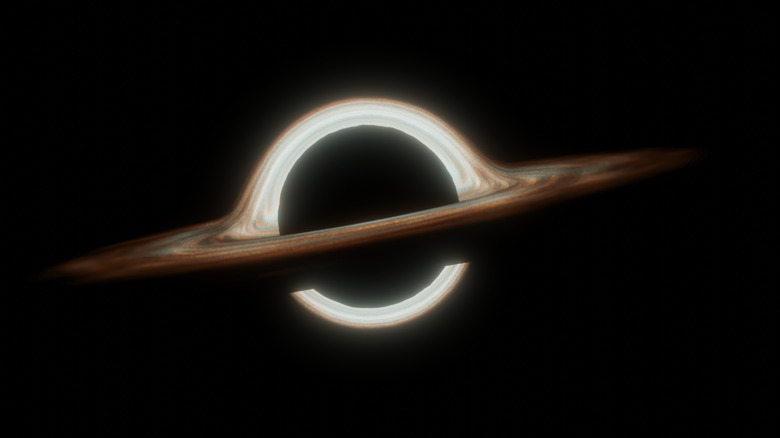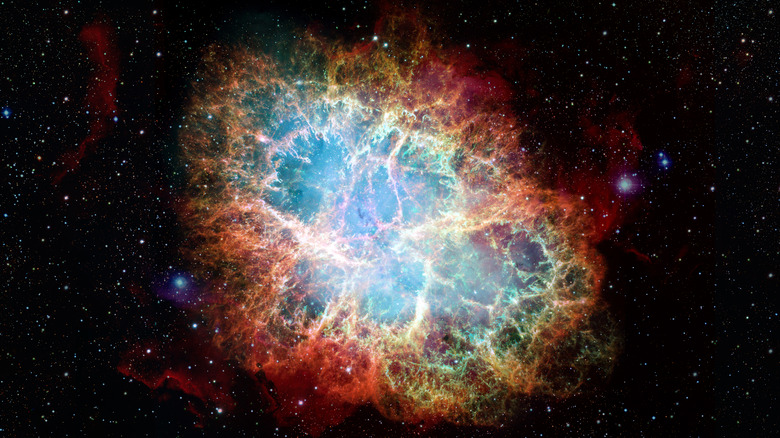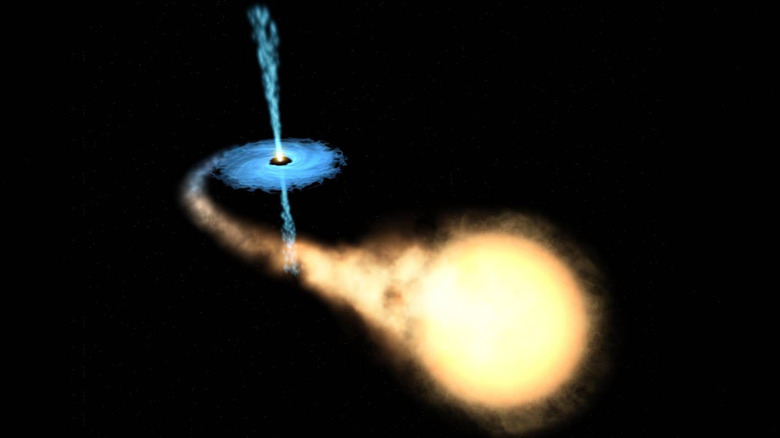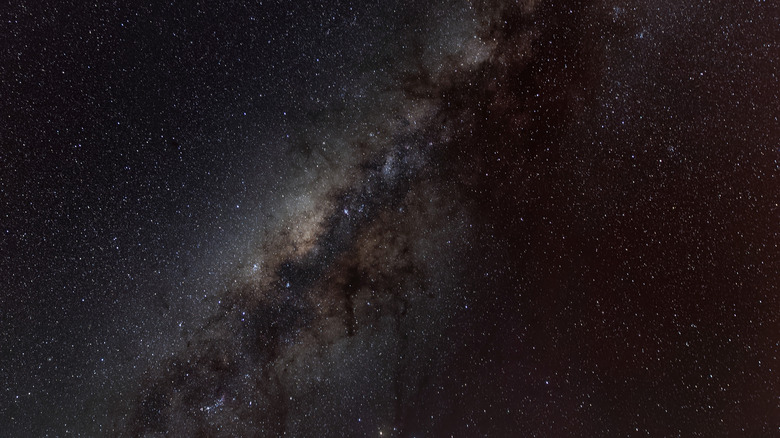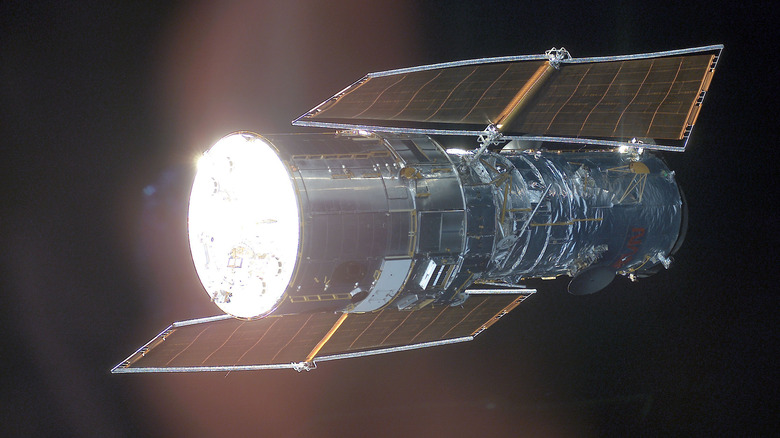The Mysterious Celestial Object That Scientists Can't Agree On
Space is a big place and there is more we don't know about what's going on out there than things we do know. And the knowledge we do have is still relatively young. The expansion of the Universe (and by extension the Big Bang) wasn't discovered until 1929. Neutron stars were first predicted five years later and wouldn't be confirmed until 1967, per NASA. That same year, the phrase "Black Hole" entered the lexicon, but it would be four more years until science could prove that they existed (via Space.com).
There are lots of mysteries still left to untangle in the Universe. We can't account for all the gravity in our galaxy or in the rest of the cosmos and have no clue where the hidden dark matter holding it together lies. We don't know why the Universe is expanding nor why that expansion is accelerating, and we have no clue about the nature of the invisible dark energy fueling it. And where are the aliens (via Science Focus)?
But not all of our unanswered questions about what's going on in outer space have such high stakes. Sometimes astronomers look to the skies and ask each other: "What is that?"
Stellar remnants
There's a lot of stuff to look at in the heavens but some of the most interesting are those made when a star more than eight times the size of the Sun reaches the end of its life. NASA explains that stars are born when clouds of hydrogen gas coalesce and create sufficient gravity to fuse two hydrogen atoms into a helium atom, releasing large amounts of light and heat, and pushing out against the crushing embrace of gravity.
As stars age, they slowly consume their supply of hydrogen. When there's no more hydrogen to fuse, they begin fusing helium into heavier and heavier elements until they begin producing iron. At this point, stars cannot create the energy needed to fuse heavier elements and, without the outward pressure of the energy released by fusion, rapidly collapse under the force of their own gravity. The energy from this collapse reverberates off the iron core, blasting away the stellar matter in a supernova (via Phys.org).
What remains is a cloud of cosmic dust and gas called a nebula, as well as the ultradense core of the star. These stellar remnants are very compact and have a very high gravity. If the doomed star had sufficient mass, the gravity of the remaining core will be strong enough that not even light can escape: a black hole.
Hunting for the hidden
Black holes were originally hypothesized over 200 years ago by two different scientists who were working separately — the English scientist John Mitchell and France's Pierre-Simon Laplace — but we couldn't prove they existed until 1971, according to Space. The problem is that black holes aren't just dark, they actively prevent light from escaping, so it's impossible to see them. Instead, they have to be inferred by how they interact with other objects in space (via NASA).
The first black hole confirmed to exist was discovered due to its interaction with a nearby star. Astronomers surveying the sky found a strong source of X-rays that didn't correspond with a bright star. Closer inspection revealed a dim star orbiting something large and invisible. Due to the size of the invisible object, scientists realized that it could only be a black hole (via Astronomy).
Most of the stellar-mass black holes discovered (the ones that aren't at the center of galaxies) have been discovered due to their interaction with stars. The black holes rip away the gas from their stellar companion which spirals down into the event horizon at speeds so fast, the friction gives off X-ray light (via National Geographic).
Solitary singularity
Statistically speaking, there should be around 100 million black holes just in the Milky Way (via NASA). Some of those should be solitary black holes without a star to feed on and without a corresponding X-ray beacon. But how do you find something you can't see?
The solution lies in the nature of gravity which black holes have in spades. Gravity literally warps the shape of space meaning that massive objects like stars and stellar remnants can bend the light that passes near them, acting like a cosmic lens (via Space.com). There are a number of ongoing surveys of the night sky looking for these light-bending events known as gravitational microlensing. The goal is to find a star that suddenly becomes brighter or changes position, indicating that something large has interposed itself between us and the star (via Physics World).
One such event occurred in 2011 when a star inexplicably became 200 times brighter. This could be explained away by a supernova, not necessarily a dark stellar remnant, so for the next six years, astronomers routinely checked in on the far away star with the Hubble Space Telescope to confirm that its position in the sky was changing. The issue now is that no one is quite sure how big it is. It could either be a neutron star, or the first isolated stellar-mass black hole ever discovered (via Science News).
Cutting edge of science
So why don't we know what this thing is? It all hinges on how big it is, and to determine the size of this unseen object we only have two metrics by which we can infer its mass: the background star's change in brightness, and its change in position. Determining the change in brightness is a fairly straightforward task, but measuring the position change is another matter. Astronomers are trying to measure the change in position on the order of milliarcseconds (via The Astrophysical Journal Letters).
A milliarcsecond is a portion of the sky about the size of a penny viewed from over 2,200 miles away. Detecting changes this small is at the limit of what the Hubble Space Telescope is capable of. On top of the minuscule motions scientists are looking for, they also have to account for the background star's wobble caused by our annual trip around the Sun.
Given that this object is the first of its kind to be studied, it's no wonder that two teams of scientists came to two different conclusions. One team unambiguously believes the mystery object is a black hole about seven times as massive as the Sun. Another team believes that the dark star is between two to four times heavier than the Sun, making it either a neutron star or a black hole. The science behind this discovery is still maturing, so don't expect scientific consensus any time soon.
